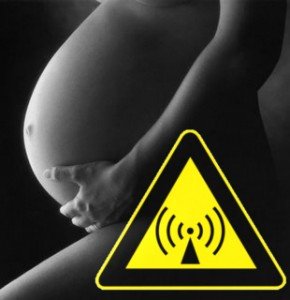A new study has suggested that exposure to magnetic fields during pregnancy may be linked to asthma in children. However, experts are urging caution in the interpretation of the research.
 The research, published today in Archives of Pediatric and Adolescent Medicine, details a prospective study that recorded magnetic field exposure in pregnant mothers and subsequently monitored the child’s medical records for 13 years.
The research, published today in Archives of Pediatric and Adolescent Medicine, details a prospective study that recorded magnetic field exposure in pregnant mothers and subsequently monitored the child’s medical records for 13 years.
The researchers found a significant association between the level of exposure and incidence of asthma, leading them to conclude: “Our findings provide new epidemiological evidence that high maternal magnetic field levels in pregnancy may increase the risk of asthma in offspring”.
However, independent experts have warned that the findings should not be taken wholesale as evidence of magnetic fields posing health risks.
Shown below is expert reaction to study of maternal magnetic field exposure and asthma risk in children, collected by the UK SMC. Feel free to use these quotes in your stories. To talk to a local expert, please contact the NZ SMC (04 499 5476; smc@sciencemediacentre.co.nz)
Prof Patricia McKinney, Professor of Paediatric Epidemiology at the University of Leeds, said:
“The strong conclusions drawn from this paper that magnetic field exposure in pregnancy increases the risk of asthma in offspring cannot be justified based on the evidence provided in the publication. The investigation lacks a biological basis or hypothesis to test; papers cited in support of possible adverse effects of EMF on reproductive outcomes and the immune system are selective and ignore the major reviews which have concluded that the findings fail to provide a sufficiently strong case for any further investigation of this topic.
“There are major deficiencies in the epidemiological methods which lack detail and for example specifically fail to identify the proportions of mothers who did not take part (refusals, non-English speakers) and children who were excluded. The characteristics of the non-participants need to be described as they may influence interpretation of the results. Crucially we cannot determine how representative the sample was – an important factor in epidemiological studies as this selection bias may have been linked to mothers who were more heavily exposed to EMF or likely to have children with asthma.
“The measurement of the exposure was restricted to a single 24 hour period during the pregnancy and this single measure then assumed to represent exposure of the entire pregnancy. There is no evidence from this or other studies regarding the potential consistency of these measurements during pregnancy, a time period where maternal behaviours change considerably. Furthermore the vulnerability of the foetus varies throughout pregnancy and most exposures which cause harm do so during a ‘critical window’ and not across the 9 months of pregnancy.
“The authors acknowledge and account for some other contributing factors (i.e. maternal asthma and being first born) but there are numerous additional well documented risk factors that remain unaccounted for. The aetiology of childhood asthma is well researched and its cause is likely to be multifactorial, but this paper does not argue strongly for maternal exposure to EMF being a contributory factor.”
Prof William Stewart FREng, Visiting Professor at University of Southampton, said:
“This study has a number of weaknesses. The meters in question are designed only to record mains power fields (both electric and magnetic), such as are found everywhere around the home and may in this case be incidentally associated with particular significant behaviours. The mention in the introduction of RF fields and WiFi is thus unjustified and misleading. They also only measure AC fields (not for example the Earth’s DC field which is more than an order of magnitude stronger!). This is important because the biological interactions of pure magnetic fields are very small compared with those of electric fields – so the authors should not describe it as a magnetic field effect at all, or mums-to-be will start to hide from the earth’s 500mG field in magnetically-shielded rooms!
“Importantly, we are not told how many different effects were looked for, which is a vital element in establishing statistical significance thresholds. So if the analysis was only done looking for asthmatic children, the study if fine. But if many other things were checked (eg. autism, heart conditions – or miscarriages, which the authors have already published on from the same cohort) then the statistical significance threshold should have been raised accordingly. This is like putting many coins in a row and tossing each one three times. If a single coin comes up heads three times in a row, one might be suspicious enough to check the other side – but if one of eight does, this is not surprising and can easily be ascribed to chance.”
Prof David Spiegelhalter, Winton Professor of the Public Understanding of Risk, University of Cambridge, said:
“This study has the advantage of having measured exposure to magnetic fields during pregnancy rather than relying on recall, but the disadvantage that the possible association with asthma seems to be an afterthought in a study of miscarriage. This means that it is essential that the findings – based on 5 cases less than expected in the low exposure group and 8 extra cases in the high-exposure group – are replicated by other researchers.”